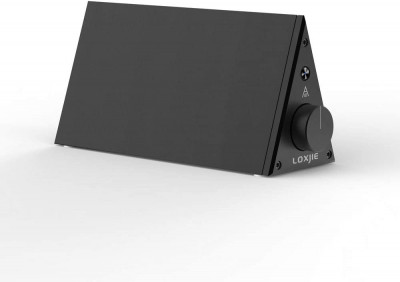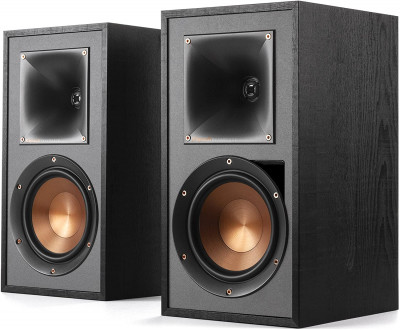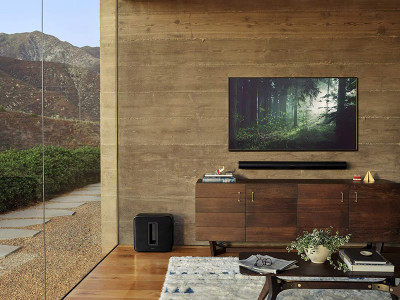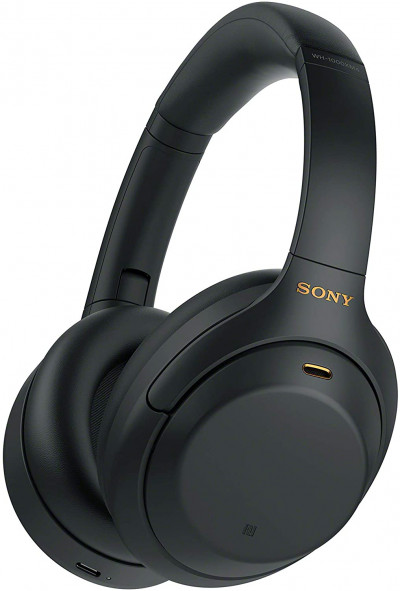How to buy Speakers - A Beginner's Guide

Are you planning on starting a vinyl collection? Perhaps you want to bring the concert experience home? Are you looking to watch Miss Americana for the hundredth time? Whatever the case, you’ll want it to sound good and that means investing in some quality speakers. Buying speakers can be a daunting task. Depending on which of the aforementioned scenarios you’re in, the setup can differ dramatically. While it may seem complicated, it doesn’t have to be. This guide is designed for complete beginners as well as people who want to up their audio game.
First, the basics.
How do speakers work?
Simply put, a speaker is a device that receives electricity and then using magnets, converts it to vibrations that produce sound. It doesn’t matter if the speaker costs a dollar or a hundred thousand dollars, if it goes in your ear, or if it's placed next to a television, this principle is always the same. Sound, after all, is a vibration that produces an acoustic wave. Your ears work exactly the same way but in reverse. Your eardrums receive the acoustic vibrations and convert them to a signal your brain understands.
How do digital speakers work?
There’s no such thing, all speakers are analog by nature and follow the exact same principle of converting an electrical current to a vibration. A "digital speaker" is a marketing term that simply means that the device can accept a digital signal which it then converts to analog using a Digital-to-Analog Converter (DAC). You can read more about how that process works in my beginner’s guide to record players.
If all speakers are the same, won’t any speaker do the trick?
While all speakers follow the same concept, the similarities end there. A lower quality speaker will not be as clear, won’t have good bass, will produce noise and distortion at higher volumes, and most importantly, it won’t be as immersive. For the most part, you get what you pay for when it comes to speakers.
Can I just connect my speakers to my record player to play music?
Maybe.
I plugged my speakers into my record player and I can barely hear anything, what gives?
This is why I said maybe. In order for speakers to produce a vibration that’s loud enough for you to hear, they need power. The tiny needle (know as a stylus) that’s reading the fine grooves on your vinyl is barely producing much sound. You need to connect your record player to an amplifier (amp) which, as its name implies, amplifies (boosts) the signal that’s coming from your record player and then sends it to the speakers. You might also need what's known as a preamp depending on your setup. For more information on listening to vinyl and what amplifiers are and do, see my guide on how to buy a record player.
The LOXJIE A10 is a great little amp that you can pair with your speakers and record player. Not only does it pack quite a punch for its size, it will make heads turn with its design. Grab it for about $60 on Amazon

What’s the difference between passive and active speakers?
An active speaker has an amplifier built into it. Typically, one of the speakers has a plug which connects it to the wall. The other speaker connects to the powered speaker and draws electricity from it. The biggest advantage of an active speaker is that you don’t need a bulky external amplifier. For most people, if all you’re going to do is listen to vinyl, an active speaker setup is totally fine. Other examples of powered speakers include AirPods and bluetooth speakers. They have batteries to power their internal mini amplifiers.
My personal choice for powered speakers are these set by Klipsch. They sound great and Klispch is a highly reputable brand for speakers. They go for about $450 on Amazon and you won't need an amp.

What’s the advantage of a passive speaker?
So far, this whole article has been about speakers for a record player and that’s where active speakers shine. An external amplifier is typically pretty huge. As a result, it can generate much more power which results in louder speakers. Passive speakers are also designed to be expandable. I'll get to that in a bit but first you’ll need to understand how stereo and surround sound work.
What is stereo?
In the early days, music was recorded in mono, meaning that you needed just one speaker to enjoy it as intended – mono after all means alone/only in greek. Stereo was eventually introduced. Music was now recorded in a way that you’d have different sounds coming from the left and the right (these are known as channels). To listen to these channels, you needed two speakers. We have two ears, so this makes sense right? To see this in action, grab some headphones and listen to the intro to Space Oddity by David Bowie. You’ll notice that the countdown and the lyrics are not coming from the same side.
What is surround sound?
Imagine your eyes are closed and someone is talking to you. If they’re to the right of you, your ears will be able to detect that. Now imagine they’re behind you, or in front of you, or even at a diagonal. Our ears are so precise that they’re able to pick up these nuances and tell you where the sound is coming from. Most speakers are directional, they only emit sound in one direction. In a stereo setup, you can tell if the sound is coming from the left or the right, but you can’t tell if it’s behind you or in front of you. This is where surround sound comes to play. By introducing two more speakers, rear speakers, we can now mimic surround sound. We can tell if the sound comes from the left or right, but also if it’s in front of you or behind you. This makes for a more immersive experience, especially when watching an action movie or playing a video game.
Why is there a center speaker in surround sound?
The short answer is dialogue. Unlike the other speakers I've mentioned, the center speaker is placed in front of you. Most of the time in movies or shows, the people that are shown on the screen are the ones talking. This is why the center speaker is mostly used for dialogue. While this effect can also be simulated by having left and right speakers only, it won’t sound as good. For movies and TV, the center is probably the most important speaker.
What is Dolby Atmos?
We’ve covered sound from all horizontal directions but what about sounds that come from above, such as an airplane. This is where Almos comes into effect. Dolby Atmos is a standard that’s used for sounds that come from above your ear level. There are two ways to achieve the Atmos effect. The best solution is to install a few speakers directly in your ceiling. If you can’t install speakers in the ceiling, you can achieve a similar effect by using upward-firing speakers that are placed on top of the left and right speakers. The sound will bounce off the ceiling and back to you. Gotta love physics.
What are the numbers in speaker setups such as 5.1, 7.1, 5.1.4 etc
The first digit indicates the amount of surround (at ear level) speakers. If you have a center, two fronts, and two rears, that would be 5. The second digit is the number of subwoofers you have. That last digit is the number of vertical speakers you have (upward-firing, ceiling, etc). A 5.1.4 setup would mean center/front/rear, with a subwoofer and 4 ceiling speakers.
What are soundbars?
If space is an issue, a soundbar is a powered horizontal device that typically houses multiple small speakers in it. Soundbars are a good solution for when a 5.1 or higher setup isn’t possible (typically lack of space, the wiring wasn’t done before the walls went up, or if you live in an open concept room). Some modern soundbars act as a wireless hub for other speakers so you don’t need to pass speaker wire everywhere. While many soundbars nowadays do have Dolby Atmos support, make sure the soundbar you choose has upward-firing speakers built-in otherwise the effect is simulated and isn't very good.
At the time of this writing, the Sonos Arc is one of the most popular soundbars and for good reason. Not only does it produce incredible sound, it also costs under $800, has Dolby Atmos support with true upward-firing speakers, and it plays nicely with Sonos' wireless subwoofer and speakers.

So how many speakers do I need?
If you’re only planning on listening to music, two really good powered bookshelf speakers will do. For movies or television, you’ll want more. The rule of thumb is, go for quality over quantity. While you might really want that lucrative 5.1.4 setup, it’s better to reduce the number of speakers and get higher quality ones. Remember, you can always add speakers as you go. I originally started with 2 for music. A couple of years later, I then added another two rears followed by a subwoofer. Eventually, I bought a center speaker (which I wish I got earlier) and now I’m going to be adding 4 more in the ceiling for the full Atmos effect. I’d recommend that you don’t mix and match your brands when it comes to speaker setups, and if possible, try to stick with the same line within that brand. While your receiver will assist in adjusting for the differences in quality and sensitivity in your speakers, it will never sound quite right.
Won't standards change and my speakers will need to be replaced in the future?
No that's the advantage of speakers. A good speaker setup will outlast any television that you end up buying. While new audio formats will undoubtedly continue to be released, your trusty speakers will remain the same. You'll probably only need to update your receiver in the future.
Are speakers my only choice?
If you’re going to splurge on speakers but live in an apartment where noise is an issue, you might be wasting your money. It might be a wise investment to splurge on a really good set of headphones in that case. Headphones are also a good option for parents when the kids are asleep.
Which headphones do you recommend?
The Sony WH-1000XM4 are my personal favorite headphones. They offer probably the best noise cancellation and sound quality for the price. You can get them for under $300 on Amazon.

Any tricks or advice for speakers?
Keep your setup up clean. Don’t leave speaker wires on the floor. They’re a tripping hazard and you can damage your speakers. When possible, pass the wires through the wall and install banana binding wall plates. If passing the wire through the wall isn’t possible, use a cable raceway and feed the wires through that.
Should I keep my speaker's grill/cover on or off?
The protective grill is for protection. You can live dangerously and keep them off but if you have kids, pets, visitors, dust, or objects of any kind in your house, you're one accident away from damaging your speakers. Take off the covers, take your pictures for your Instagram, and then put them back on.
That's it for now. I'll be posting a complete speaker buyer's guide to help you with your 5.1.4 (or more) setup in the near future.
Thanks for reading!